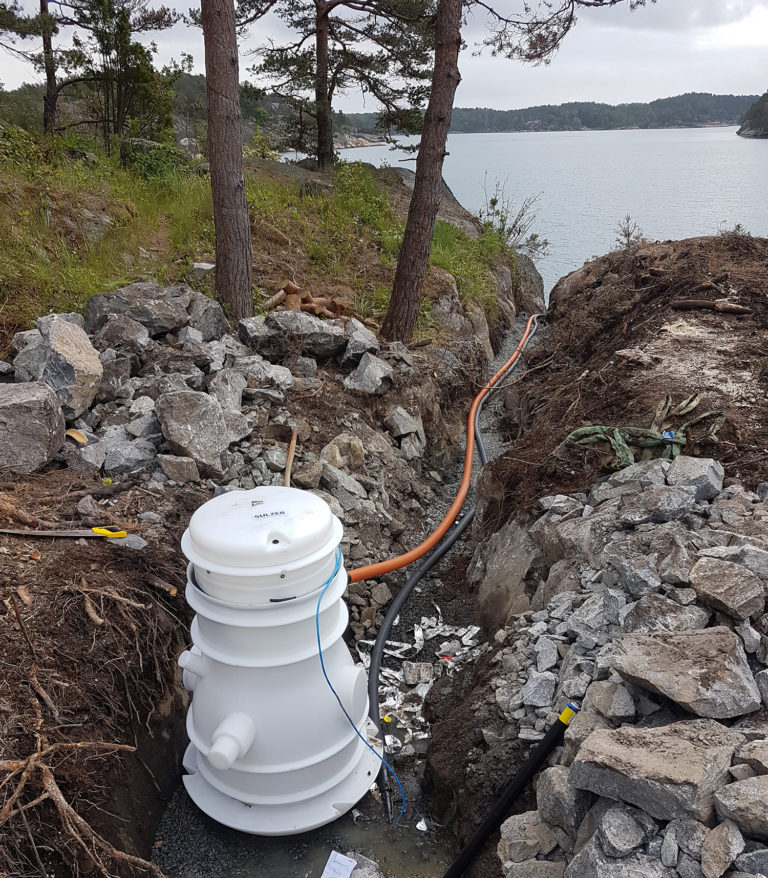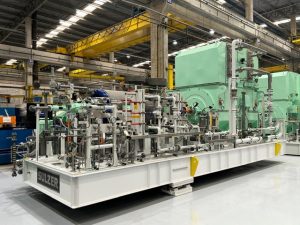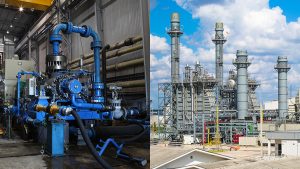Pressurized Sewage Pumping Systems for Norways Remote Holiday Homes

Flexible high pressure pipes are easy to install in difficult ground and can even run over the bed of the fjord. (Image source: Sulzer)
Blindleia in south eastern Norway has long been a popular holiday destination. The 20 km (12 mile)-long fjord passage, protected from the open sea by an archipelago of rocky islands, is the ideal place for families to relax together and enjoy the outdoors. Over the years, more than 1’000 cabins and small homes have sprung up along the shores of the fjord, boosting the local economy but creating a challenge for the region’s wastewater utilities.
The rugged landscape of Blindleia is a big part of its appeal to holidaymakers, however it also presents a difficult environment for the provision of sewage and wastewater services. Building a gravity-fed sewage network is impossible, while the waterside location of many homes makes the installation of conventional storage tanks unacceptable on environmental grounds.
Compact solutions
To overcome the technical challenges of the terrain, many homes in the region have adopted a smarter approach to wastewater management: pressurized sewage system technology from Sulzer. These systems use a compact lifting station installed in the ground outside or inside each home, most often a Sulzer Synconta 700 or 800 series unit. This rugged ABS tank contains an efficient submersible grinder pump featuring a lobed rotor cutter attached to a centrifugal impeller together with a stationary cutting element. The pump breaks down solids into particles around 1mm (3/64 in) in size, allowing them to be transported easily through a small diameter pipe to the nearest municipal wastewater treatment facility.
The 32 to 50 mm (1¼ to 2 in) diameter, flexible high pressure pipes that make up the network are easy to install in difficult ground. They can be buried in a narrow trench, or even run over the bed of the fjord. In Blindleia, pipes are often equipped with trace heating, allowing them to operate in shallow soil without the risk of freezing, and the pressurized nature of the system means pipes can run up as well as downhill.
A domestic pump can transport wastewater up to 4 km (2.5 miles). If longer distances are necessary, booster stations are installed on the network. Sulzer engineers use advanced proprietary planning software to optimize the size and configuration of pumps, intermediate storage tanks and pipes across the network. The software automatically generates all the necessary documentation on system pressures and flow rates.
Simple maintenance
Careful planning ensures that the system copes with demand, even at the height of summer. It also means that most sites have the same pump model installed, simplifying the provision of spare parts. Any maintenance requirements are covered by a number of local plumbing companies, which have received installation and maintenance training from Sulzer specialists.
To date, almost 2’000 Sulzer pumping stations have been installed in Blindleia and the surrounding region, and the equipment has gained an enviable reputation for reliability and dependability. Most domestic installations require only basic monitoring and routine maintenance, while Sulzer provides advanced control systems with mobile messaging or internet links for the most critical machines in the network.
Sulzer pressurized sewage solutions are becoming an increasingly popular choice for many areas where the terrain or local ground conditions make conventional wastewater systems impractical. The approach is used in mountainous regions, along coastlines and in low-lying marshy land, for example. It can also be the most cost-effective option in sparsely populated areas. Sulzer systems are operating today across Norway and other countries including Sweden, Denmark, the Netherlands, Germany, Switzerland, Spain, Poland and North America.
Source: Sulzer Ltd.







